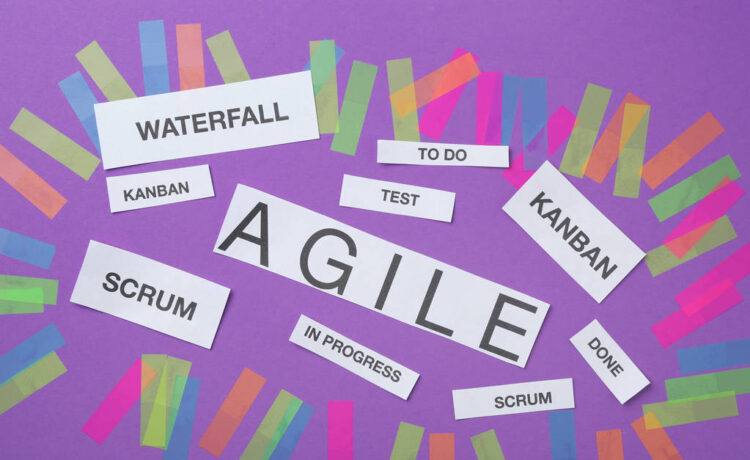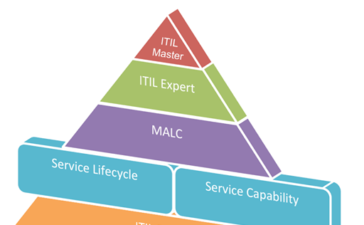Since some similarities exist between Agile vs Scrum, people often view these two concepts as the same. Both are part of Project Management. Project Management is a planned team activity. In this process, the Project Manager undertakes, organizes, and carefully designs a goal and aims to achieve it within a stipulated time frame. A project is always temporary. It is well-documented and has an eye on the objectives of the organization. The execution of the project is in a sequence of phases.
As part of its execution, the organization adopts one of the approaches known as Agile Project Management. An Agile Project Manager leads this team. Within this approach, the project team uses the Scrum method to manage the development of the Project, and a Scrum Master leads this small team.

Before we highlight the similarities and differences between Agile vs Scrum, let us familiarize ourselves with these two concepts at a wider level.
Agile Project Management
The Agile approach replaced the traditional Waterfall Model. The Waterfall Model had a rigid structure without the ability to accommodate the ever-evolving, competitive market requirements. This inflexible model brought about a tremendous waste of time, effort, and budget, thereby affecting the organization’s performance.

However the Agile approach is sophisticated in terms of flexibility, efficiency, and adaptability. It follows an iterative process in its software development. In the iterative process, the project is split into shorter periods called iterations that range from two to six weeks. In this fast-moving world, it embraces the fact that project expectations can evolve in view of changing market conditions. So, this approach aims at continuous improvement in the design and concept at regular intervals. During the development of software, the Agile Project Manager incorporates the changes in the project that result from the client’s feedback or better ideas. The effectiveness of this approach has made it widely popular.
Agile Project Management is a project philosophy with a set of principles and values that provide better flexibility and ongoing improvement. Its goal is to arrive at a measurable Return on Investment. With the intrinsic nature of this approach, it becomes necessary for the Project team to interact with the client periodically so that the client’s expectations are in proper alignment with the existing design of the project. In the event of a deviation, the Project Manager can make the necessary alterations to the process. So, this adds value to the quality of the project and enhances customer satisfaction.

Scrum Project Management
With the Agile approach in place, a Scrum Project Management methodology is set up to take the project ahead. The Scrum methodology applies the principles laid down in Agile Project Management. Scrum is a framework that is structured to help teams to fix priorities and manage their work at a fast pace. It ensures transparency and collaboration at all levels. It also makes sure that there is a proper understanding of the processes of the Scrum environment, and it keeps the emphasis on the laid goals. In this methodology, the Scrum Master allocates the respective tasks among the team members along with the deadline for their scheduled completion.
The work is split into short cycles called sprints, and the duration of a sprint is usually 1 to 4 weeks. During this cycle, the Scrum Master meets his team to review the progress. A series of such sprints would lead to incremental improvements in product development. The Scrum Master guides the team to follow the defined methodology at all stages.

Similarities in Agile vs Scrum
Agile and Scrum are closely connected. So, we observe some striking similarities between them. As a result, many companies use a combination of this approach and methodology. Below mentioned are the common points between Agile vs Scrum –
1) Both methodologies focus on improving customer satisfaction. Their compatibility gives them an edge over other approaches.
2) These two methodologies follow the iterative approach in Project Management.
3) They are adaptable to the new requirements that come up in the process of software development.
4) In their continuous process, there is growing collaboration among the team members and proper engagement with the clients.
5) The development cycles for the two methodologies are short.
6) Both approaches aim to speed up the product development process. So, it generates quick results and better transparency.
Differences between Agile vs Scrum
In a comparison between Agile vs Scrum, the experts could notice the below differences between the two.
1) Meaning
Agile is a project philosophy consisting of a set of principles and values to guide Project Management. In Scrum Management, organizations adopt the Scrum methodology to facilitate the project.
2) The Leader’s role
The Agile Project Manager has a higher role and is responsible for the successful outcome of the overall project. The Scrum Master leads a small team, and his responsibility is to make certain to apply the Scrum framework productively in their process for qualitative results. However, the two leaders depend on each other to attain the defined objectives.
3) Frequency of delivery
In Agile, the manager obtains regular feedback related to the changes in the end user’s requirements. With continuous iterations and testing, he designs the integrated software and delivers it after the completion of the entire project. Scrum is a mini-project within Agile in which work is split into small sprints of short duration, and they deliver the software in series.
4) Member composition
Agile consists of members from several cross-functional teams. This means members with a range of skills from various functional areas work together as a team towards a common goal. The Scrum Project team mainly consists of the Scrum Master and the Product Owner.
5) Collaboration
In Agile, cross-functional team members have face-to-face interactions between them. But, in Scrum, the collaboration is in the form of daily stand-up meetings.
Recommended Reads
To gain further knowledge of Agile and Scrum, readers can visit the blogs below–
Top 10 Product Management Courses Online
Top 12 PMP Certification Courses In Hyderabad
Henry Harvin Education
To enhance the ability and understanding of Agile principles and Scrum development, Henry Harvin Education offers certified Agile Leadership Training Course and Scrum Developer Training Course.
Conclusion
In Agile vs Scrum, before deciding upon an approach for a project, the organization should know its specific requirements and its internal constraints. More important than the methodology, the success of a project depends on its skillful execution, effective communication, impactful leadership, critical thinking with problem-solving ability, competent teamwork, and the maturity of the professionals in their role. The leaders have to make sure that their approach and methodology do not conflict with each other.
FAQs
It completely depends on the end-user’s development requirements, the organization’s constraints, and its goal. If software development needs a flexible and adaptable approach, then the organization can choose Agile. If the organization anticipates likely changes and frequent testing, then it can choose Scrum as the methodology.
A product life cycle is the period the product remains in the market from the time of its introduction. With an increase in demand and production, it moves to the “Growth” stage. Further, with an increase in its sales and the profit it generates, its position is at the “Maturity” stage. But, with an increase in competition and a drop in demand, it loses its market and comes to a “Decline” stage. So, at this juncture, the company stops marketing this product. Later, it might modify the same product and reintroduce it in its new version.
In Agile vs Scrum, the Agile Project Manager should have excellent skills in Time Management, a focus on evolving necessities to revise the priorities, team handling ability, sharpness in critical thinking, adaptability, and a commitment to lead the project to its success. A Scrum Master should be brilliant in sprint planning, problem solving, collaboration, leadership, conflict resolution, and change management. The key skill for both leaders is to cooperate with each other.
a) There is a possibility of a budget risk because it is difficult to assess the total cost of the project at its initial stage, assuming the constant modifications that can take place in the process.
b) It is also a big challenge to predict its long-term outcomes.
c) Lack of process knowledge on the part of the team members can slow down the progress of the project.
d) The continuous changes at every stage might result in some unexpected delay in the completion of the project. So, in such a situation, the company could not participate in any new projects.
















